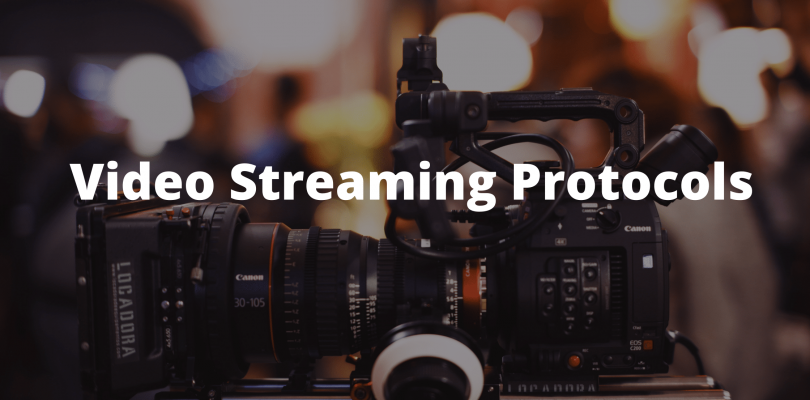Mobile video streaming traffic is on the rise, and as recent studies suggest, overall internet video traffic will account for 82% of internet traffic in 2022. It is for this reason it is vital to understand common streaming protocols and how to use those to create high-quality streaming experiences.
Below, you will learn what they are and how each one can benefit your stream.
Why Streaming Protocols Are Important for High-Quality Streaming
The demands placed on internet service providers can create a strain during high-traffic times. If you are looking to provide high-quality, streamable content to viewers, you must choose the proper streaming protocols.
Is your video software capable of managing all the protocols? What are the right questions to ask when making this determination?
These are some tough questions to answer if you are unfamiliar with the primary streaming protocols. To differentiate between which streaming protocol is the best choice, ask yourself the following questions:
- Will the stream remain in your direct-to-consumer app or be distributed by a third party?
- How many people are going to be watching?
- Where are the viewers located?
What are the Primary Streaming Protocols?
If you do not choose the correct primary streaming protocol solution, you risk a user experience (UX) issue where viewers face lag, poor audio quality, and continued buffering. These popular solutions will help you develop your OTT streaming needs.
Here are the five primary streaming protocols and the benefits of each:
● HTTP Live Streaming (HLS): Created by Apple and developed in 2009, this streaming media protocol solved a streaming issue that affected Gen 1 and Gen 2 iPhones. This protocol is well-supported by desktops, browsers, and mobile devices.
● Dynamic Adaptive Streaming over HTTP (DASH): Developed by MPEG (Moving Picture Expert Group), this protocol is the authority for media compression. As a newer standard, this protocol is open sourced and the only one certified by International Organization for Standardization (IOS). It allows for flexibility in the codec choice for playback.
● Moving Pictures Expert Group 4 (MP4 or MPEG-4): Popular for off-line use for many years, this video container format doesn’t utilize HTTP streaming. It cannot offer changes to bandwidth or fix lag-related situations. It is widely supported, easy to use, and is a great starting point for other formats.
● MPEG-TS Linear: This format allows for the transmission of video and audio files. It supports synchronization and error correction. The streams are divided into 188 bytes or less, and reduce audio delay for improved UX. This protocol is best for live streams and video calls.
● Real-Time Messaging Protocol (RTMP): This is one of the older streaming protocols, derived from the Adobe Flash player. It has been adopted by most developers because it is reliable and has reasonably low latency. It is the best source for streaming live sports.
Determining Which Streaming Protocols to Choose
Your choice for which protocol will work best for your business will be determined by its application. Consider the above to help make a reasonable comparison between the common streaming protocols you will need to utilize.
If you still need a little more help understanding the common streaming protocols, reach out to an industry professional. They can better explain these protocols so crucial in app development.
Daniel Lofaso is the VP of Marketing for 43Twenty, a strategic advisory and marketing firm that accelerates growth for companies in technology, media, and entertainment.

